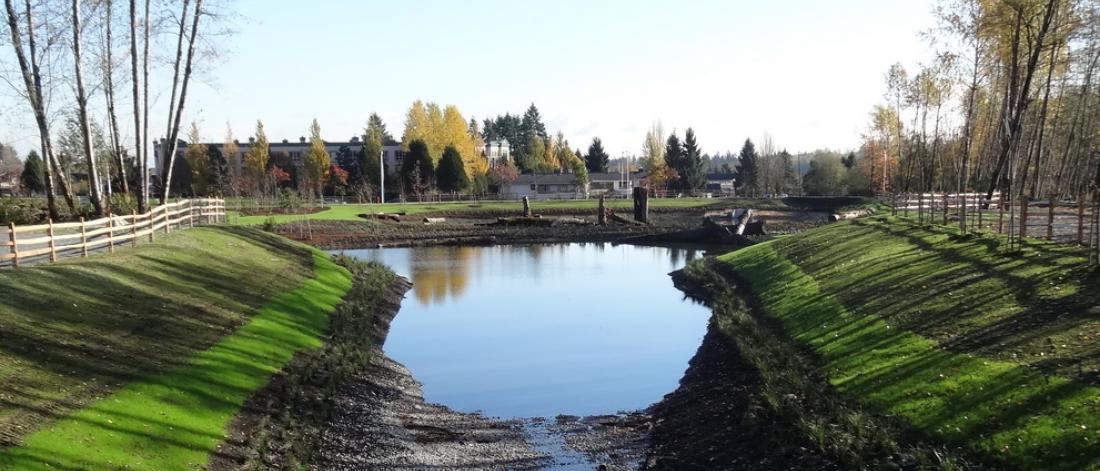
Detention Ponds
Learn about detention ponds and why they are used in Surrey.
Detention ponds used for storm water management provide temporary storage of rainwater runoff. When the capacity of a downstream pipe or stream is less than the runoff flows from development, a detention pond temporarily stores water so it can be released slower for a longer amount of time.
Detention Pond Design
Detention ponds are generally designed to:
- Accommodate existing and future upstream development
- Weaken peak flows from storm water runoff
- Lessen erosion downstream
Design details for detention ponds can be found in the City of Surrey Engineering Design Criteria Manual.
Detention ponds come in different shapes and sizes and can be wet or dry. Due to the land requirements for a pond, many commercial developments choose to locate detention below ground, enabling the dual use of the same area for both surface access and drainage. These are known as detention tanks. Detention ponds can be one component of the sustainable drainage features of a development project or of a community.
Wildlife
A visit to any detention pond will provide an opportunity to see the variety of wildlife that populates the area. Wet ponds and wetlands located in Surrey are safe because birds and frogs naturally control insects along with the City’s pest management system.
Environmental Benefits
Where a detention pond is designed to help service a new development it is incorporated into a park setting for the benefit of Surrey residents. Some detention ponds offer environmental benefits. This includes:
- improves water quality by removing sediments and uptake of metal/hydrocarbon pollutants,
- promotes wildlife, amphibian habitat and fish habitat,
- supplies a source of nutrients to a Creek system, and
- provides esthetic purposes with varying water levels, diverse plantings and walking trails.